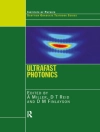This book provides an insight into recent technological trends and innovations in mobility solutions and platforms to improve mobility of visually impaired people. The authors’ goal is to help to contribute to the social and societal inclusion of the visually impaired. The book’s topics include, but are not limited to, obstacle detection systems, indoor and outdoor navigation, transportation sustainability systems, and hardware/devices to aid visually impaired people. The book has a strong focus on practical applications, tested in a real environment. Applications include city halls, municipalities, and companies that can keep up to date with recent trends in platforms, methodologies and technologies to promote urban mobility. Also discussed are broader realms including education, health, electronics, tourism, and transportation. Contributors include a variety of researchers and practitioners around the world.
- Features practical, tested applications of technological mobility solutions for visual impaired people;
- Presents topics such as obstacle detection systems, urban mobility, smart home services, and ambient assisted living;
- Includes a number of application examples in education, health, electronics, tourism, and transportation.
Inhoudsopgave
Chapter1: Smart Cities to Improve Mobility and Quality of Life of the Visually Impaired.- Chapter2: A Survey on Accessible Context-Aware Systems.- Chapter3: Smart systems to improve the mobility of people with visual impairment through Io M and Io MT.- Chapter4: Comprehensive Literature Reviews on Ground Plane Checking for the Visually Impaired.- Chapter5: Technologies and Systems to Improve Mobility of Visually Impaired People: A State of the Art.- Chapter6: Cloud Video Guidance as “Deus ex Machina” for the Visually Impaired.- Chapter7: Virtual Vision Architecture for VIP in Ubiquitous Computing.- Chapter8: Intelligent Vision Impaired Indoor Navigation using Visible Light Communication.- Chapter9: Am IE: An Ambient Intelligent Environment for Blind and Visually Impaired People.- Chapter10: Digital Enhancement of Cultural Experience and Accessibility for the Visually Impaired.- Chapter11: Towards sustainable domestication of smart Io Tmobility solutions for the visually impaired persons in Africa.- Chapter12: Large-scale Interactive Environments for Mobility Training and Experience Sharing of Blind Children.- Chapter13: Hap AR: Handy Intelligent Multimodal Haptic and Audio Based Mobile AR Navigation for visually impaired.- Chapter14: A Context-Aware Voice Operated Mobile Guidance System for Visually Impaired Persons.- Chapter15: Modelling the Creation of Verbal Indoor Route Descriptions for Visually Impaired Travellers.- Chapter16: An Aid System for Autonomous Mobility of Visually Impaired People on the Historical City Walls in Lucca, Italy.
Over de auteur
Sara Paiva is an Associate Professor at the Polytechnic Institute of Viana do Castelo, a Ph D in Informatics Engineering from University of Vigo and a postdoctoral researcher at the University of Oviedo since January 2018, under advanced driving assistants and urban mobility. Sara Paiva coordinates ARC4Digi T, the Applied Research Center for Digital Transformation, created in january 2018.. Her main line of research is mobility solutions in urban environments applied to citizens in general and/or to the promotion of social inclusion.
She is frequent book editor of Springer and IGI books, has more than 30 publications in international journals and conferences, is a frequent reviewer of journals and international conferences and has supervised several final projects of Bachelor and Master in her main line of work.












